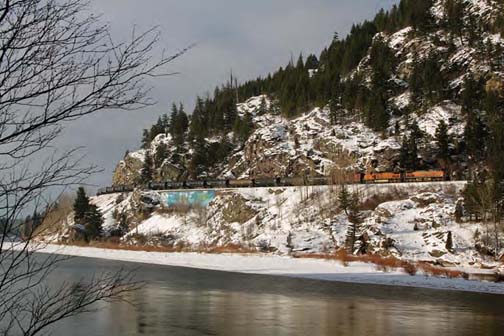Only a small percentage of railroads are expected to obtain system certification and complete implementation of GPS-aided positive train control (PTC) systems by the current deadline at the end of this year, according to a recent report to Congress by the Federal Railroad Administration (FRA).
Only a small percentage of railroads are expected to obtain system certification and complete implementation of GPS-aided positive train control (PTC) systems by the current deadline at the end of this year, according to a recent report to Congress by the Federal Railroad Administration (FRA).
Despite being characterized by the FRA as “the single-most important rail safety development in more than a century,” seven years after it was mandated and nearly six years after FRA issued the technical regulatory requirements for its implementation, PTC technology has been installed on only a fraction of the nation’s Class I railroad main lines — lines that transport five million or more gross tons annually. Passenger rail companies must also implement PTC.
PTC is statutorily defined as “a system designed to prevent train-to-train collisions, over-speed derailments, incursions into established work zone limits, and the movement of a train through a switch left in the wrong position.” The PTC mandate and deadline were part of the Rail Safety Improvement Act of 2008 (RSIA) signed by President George W. Bush signed on October 16, 2008.
PTC systems use digital radio communications, GPS, and fixed wayside signal systems to send and receive a continuous stream of data about the location, direction, and speed of trains. This real-time data helps dispatchers and train crews to safely manage train movements, including automatic application of train brakes if a train crew fails to properly operate within specified safety parameters.
A total of 15 freight and 10 passenger accidents over the seven-year period between 2001 and 2008 resulted in more than 34 deaths and 600 injuries. All of the accidents were PTC preventable, according to the National Transportation Safety Board (NTSB).
NTSB Chairman Christopher Hart has said that PTC would have prevented the May derailment in Philadelphia that killed 8 persons and injured more than 200. The train was traveling at 106 mph on a curve designed for 50 mph, according to the accident investigation.
FRA has received only three of the 38 Class I PTC Safety Plans (PTCSP) that the agency needs to evaluate before it can provide system certification. Those came from BNSF Railway Company, Southern California’s Metrolink service, and Philadelphia’s Southeastern Pennsylvania Transportation Authority. Eleven railroads are expected to demonstrate their PTC systems this year.
Due to the varying rate of progress and incomplete data provided by the railroads, the FRA said it “is highly likely that the industry will not be in complete compliance by December 31, 2015.” Last month, the U.S. Senate passed a transportation bill that would allow the Obama administration to grant an extension of up to three years for railroads to implement the system, although the House of Representatives may not take the bill up this session.
Lack of public sector funding, resistance from many of the nation’s railroad companies and the Association of American Railroads (AAR), and the complexity of the PTC system technology are among the causes cited for the delays.
In the absence of a deadline extension, the FRA says it intends begin enforcing the PTC mandate on January 1, 2016. Civil penalties comprise the most often–used enforcement measure. Others tools include compliance or emergency orders and pursuit of injunctions or criminal penalties with the Department of Justice.
“[E]nforcement tools will be targeted to maximize safety, save lives in the event of an accident, and bring railroads into compliance with the PTC statute and regulations,” the FRA report states.
FRA has long stated that a lack of public sector funding may result in unwanted delays in fully implementing PTC, especially on commuter railroads,” the agency said in its report. “Congress has not provided a guaranteed, reliable revenue stream for implementation on commuter railroads.”
FRA issued multiple modifications to its original, final PTC rule of January 15, 2010; however, those modifications did not affect the technical regulatory requirements of PTC, according to the FRA report. “The changes simply reduced the scope of the deployment from approximately 70,000 miles to approximately 60,000 miles. The technical requirements were first made available to railroads nine months after the RSIA was signed into law, and finalized just seven months later. Those technical requirements have not fundamentally changed.”
As of June 2015, aggregate analysis of data from the railroads, along with supplementary data from AAR, indicates that Class I railroads have:
• Completed or partially completed installations of more than 50 percent of locomotives that require PTC equipment
• Deployed approximately 50 percent of wayside units
• Replaced approximately 50 percent of signals that require replacement
• Completed most of the required mapping for PTC tracks.
By the end of 2015, AAR projects that:
• 39 percent of locomotives will be fully equipped
• 76 percent of wayside interface units will be installed
• 67 percent of base station radios will be installed
• 34 percent of required employees will be trained.
According to the American Public Transportation Association (APTA), 29 percent of commuter railroads are expecting to complete installation of PTC equipment by the end of 2015. APTA predicts that full implementation of PTC for all commuter lines will occur by 2020.





